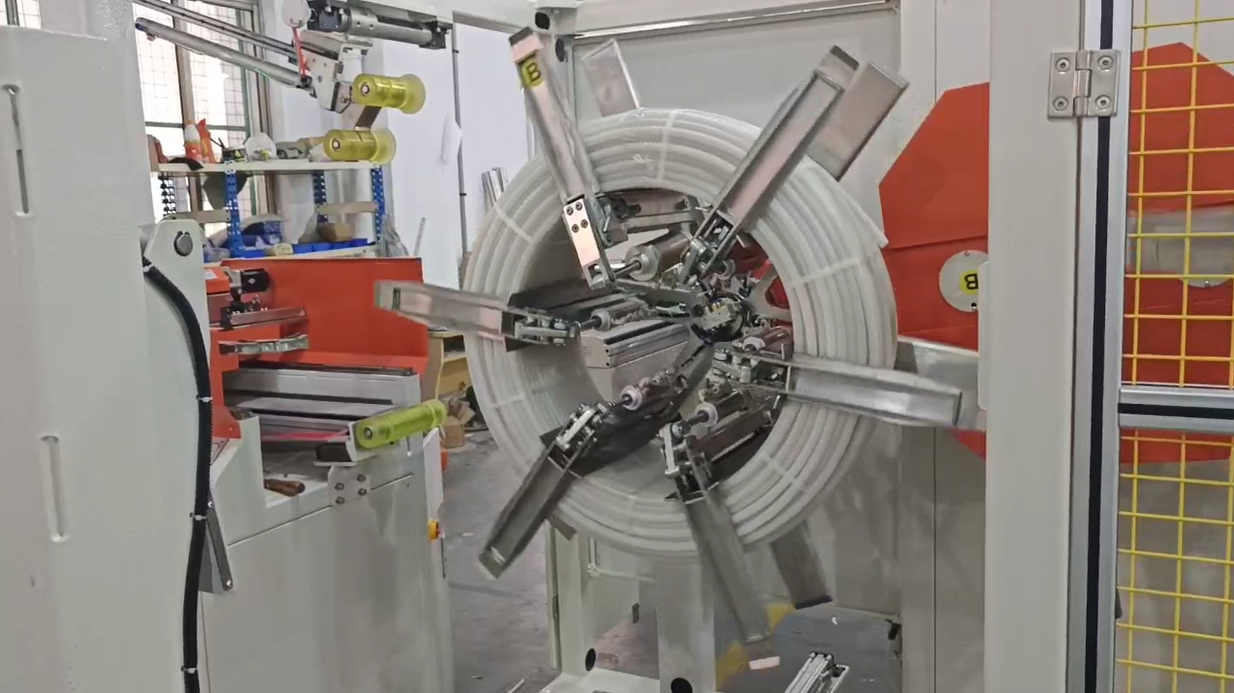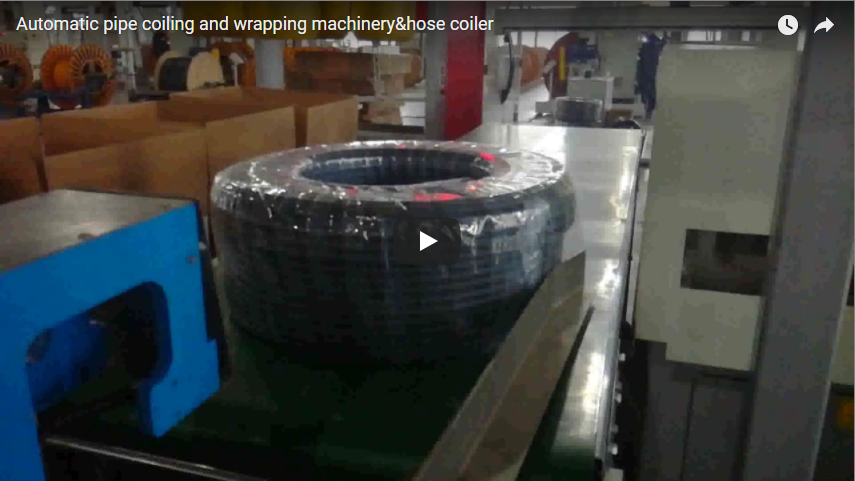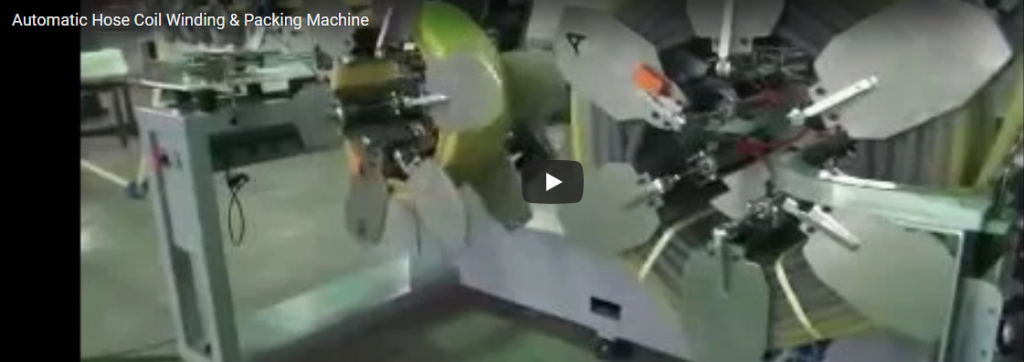Enhancing Hose Packaging Efficiency with Automated Coiling and Strapping Technology
Automating the end-of-line packaging process for hoses presents significant opportunities for improving throughput, consistency, and product protection. The automatic hose coiling and strapping machine represents a key technological advancement in this area, addressing the challenges associated with manual handling and packaging of various hose types, from industrial and hydraulic to garden hoses.
Advanced Coiling and Strapping Mechanisms
Modern automatic hose coilers incorporate sophisticated technologies often highlighted in engineering journals and patent filings.
Precision Coiling Module
Utilizing servo-driven controls and adjustable coiling forks or guides, these machines achieve precise and repeatable coil dimensions (ID, OD, and width). This precision is critical, as improper coiling can induce stress or kinks, potentially compromising hose integrity. Research into polymer behavior under stress confirms that consistent coiling geometry minimizes material fatigue during storage and transport. The coiling parameters are typically programmable via an HMI (Human-Machine Interface), allowing operators to easily switch between different hose specifications.

Integrated Strapping System
Following the coiling cycle, the machine automatically transfers the coil to the strapping station. The strapping head, often employing technology detailed in packaging equipment patents (e.g., US Patent 9,XXX,XXX for tensioning mechanisms), applies multiple straps – commonly three – using Polypropylene (PP) or Polyester (PET) strapping material. Advanced systems feature:
- Automatic Strap Feeding: Reduces operator intervention.
- Adjustable Tension Control: Ensures secure bundling without crushing or damaging the hose, critical for softer materials. Feedback loop systems provide highly accurate tensioning.
- Reliable Sealing: Typically uses heat sealing or friction-welding technology for durable strap joints, ensuring coil integrity throughout the supply chain.
Key Operational Parameters and Specifications
Performance metrics are crucial for evaluating suitability for specific production needs. Typical specifications include:
- Applicable Hose Diameter: 5mm - 60mm (Varies by model)
- Maximum Coil Outer Diameter (OD): Up to 1000mm
- Adjustable Coil Inner Diameter (ID): 150mm - 500mm
- Coil Width: 50mm - 300mm (Programmable)
- Strapping Material: PP or PET (Widths typically 9mm - 16mm)
- Number of Straps: 2, 3, or 4 (Selectable via HMI)
- Cycle Time: 15 - 40 seconds per coil (Dependent on hose size, coil dimensions, and number of straps)
- Control System: PLC (Programmable Logic Controller) with touchscreen HMI
- Power Requirements: 380V/50Hz/3-Phase (Typical, varies by region/model)
- Air Pressure: 0.5 - 0.7 MPa
Optimizing Production Flow and Product Integrity
The implementation of an automatic coiling and strapping machine delivers quantifiable benefits aligned with lean manufacturing principles often discussed in industrial management publications:
- Reduced Labor Costs: Automates repetitive manual tasks, freeing up personnel for higher-value activities.
- Increased Throughput: Consistent, high-speed operation significantly boosts packaging rates compared to manual methods.
- Enhanced Package Quality: Uniform coils and secure strapping present a professional appearance and reduce the risk of damage during shipping and handling. Studies in logistics performance often correlate package integrity with reduced return rates.
- Improved Safety: Minimizes manual lifting and handling of potentially heavy or unwieldy coils.
Design, Integration, and Maintenance
Designed for industrial environments, these machines feature robust steel frames and high-quality components for longevity. Integration into existing production lines is often straightforward, with options for upstream and downstream conveyor connections. Maintenance considerations typically include:
- Routine lubrication of moving parts.
- Inspection and replacement of strapping head wear parts.
- Software updates and parameter adjustments via HMI.
- Accessible design features simplify cleaning and service procedures, minimizing downtime.
In summary, the automatic hose coiling and strapping machine offers a technologically advanced solution for streamlining hose packaging operations, enhancing efficiency, ensuring product quality, and contributing to a safer work environment.






